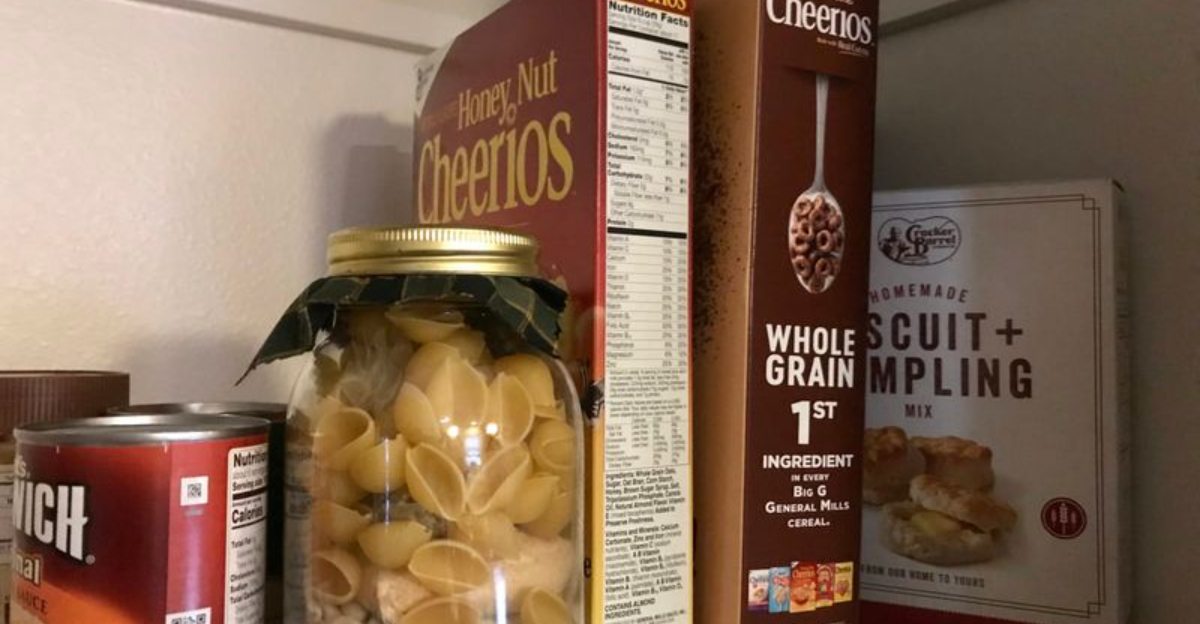12 Expired Foods You Should Never Keep In Your Pantry (But Most People Still Make The Same Mistake)

We’ve all been there, reaching into the pantry for ingredients only to discover items that have been sitting there for who knows how long. While some foods remain safe past their expiration dates, others can pose serious health risks or simply lose their quality.
Understanding which expired foods to toss isn’t just about cleanliness but about protecting your health and ensuring your meals taste their best.
1. Rancid Cooking Oils
Once opened, oils like olive, vegetable, and coconut start their countdown to rancidity. The telltale signs? A sticky residue around the cap, funky smell, or bitter taste.
I learned this the hard way after ruining an entire dinner party pasta with oil that had been lurking in my cabinet for over a year.
Store oils in cool, dark places and replace them every 3-6 months after opening.
2. Ancient Spice Collections
Ground spices don’t spoil in the traditional sense, but they do lose potency dramatically after 6-12 months. That cinnamon from three Christmases ago? Essentially aromatic dust.
Check your spices by crushing a pinch between your fingers. No aroma means no flavor in your cooking.
Replace them regularly or switch to whole spices, which maintain their punch much longer.
3. Stale Breakfast Cereals
That half-empty cereal box from months ago isn’t doing your breakfast any favors. Once opened, cereals absorb moisture from the air, becoming stale and losing their satisfying crunch within 2-3 months.
Beyond the disappointing texture, old cereals can develop off-flavors or even grow mold in humid environments. Transfer opened cereals to airtight containers to maintain freshness.
4. Brown Sugar Turned to Stone
Rock-hard brown sugar isn’t technically expired, but it’s certainly unusable. The moisture that gives brown sugar its soft texture evaporates over time, leaving you with a sweet brick.
Last Thanksgiving, I nearly broke a tooth trying to chisel off a piece for my pumpkin pie! While you can revive it with a bread slice or apple wedge in a sealed container, extremely old sugar may develop off-flavors.
5. Questionable Condiments
Ketchup, mustard, and mayonnaise often migrate from refrigerator to pantry, where they deteriorate faster. Mayo becomes particularly dangerous when improperly stored, potentially harboring harmful bacteria.
Even vinegar-based condiments like ketchup change color and flavor over time. Check for separation, off-colors, or unusual smells, and always refrigerate after opening according to label instructions.
6. Nuts Gone Bitter
The high oil content in nuts makes them particularly vulnerable to rancidity. Walnuts, pecans, and pine nuts are especially quick to turn, developing a bitter, paint-like flavor.
I once ruined an entire batch of holiday cookies with rancid almonds – what a disappointment! Store nuts in the freezer to extend their life, and always taste-test before adding to recipes.
7. Dried Herbs Turned to Dust
Those dried parsley flakes from your kitchen renovation three years ago? They’re essentially green dust now. Dried herbs typically maintain their flavor for only 1-2 years.
Unlike spices which may just lose potency, old herbs can develop musty flavors that ruin dishes. The color tells the tale – vibrant herbs have flavor, while faded ones belong in the trash.
8. Suspicious Canned Goods
Dented, bulging, or rusty canned goods should never be consumed, regardless of expiration date. These defects can indicate botulism contamination – a potentially very dangerous foodborne illness.
Even pristine cans have limits: high-acid foods like tomatoes last 12-18 months, while low-acid foods like beans can go 2-5 years.
But when my cousin served 7-year-old canned corn at a barbecue, nobody went back for seconds!
9. Baking Powder That’s Lost Its Power
Flat cookies and pancakes can often be traced back to expired leavening agents. Baking powder gradually loses its rising power after opening, becoming completely ineffective after about 9-12 months.
Test it by adding a teaspoon to hot water – if it doesn’t bubble vigorously, it won’t help your baked goods rise.
Unlike some pantry items, there’s no salvaging inactive baking powder.
10. Moldy Bread Crumbs
Store-bought breadcrumbs might seem shelf-stable forever, but they typically maintain quality for only 6 months. Homemade versions spoil even faster.
The telltale signs of spoilage include a musty smell, visible mold spots, or clumping from moisture absorption.
I once discovered the hard way that moldy breadcrumbs can ruin an entire casserole with their off-putting flavor.
11. Stale Crackers and Chips
Nothing disappoints like reaching for chips only to find they’ve gone limp and stale. Once opened, crackers and chips absorb moisture from the air, losing their satisfying crunch within weeks.
Beyond texture issues, these items can develop rancid flavors from their oil content. My solution? Magnetic chip clips and airtight containers for everything, plus a strict first-in, first-out policy for snacks.
12. Expired Boxed Pasta
Dry pasta lasts impressively long, but not forever. After 1-2 years, it can develop off-flavors or attract pantry pests like weevils and moths.
Check old pasta boxes by inspecting for tiny holes or insect evidence. During my college years, I discovered an entire pasta stash had become a moth nursery!
Store pasta in airtight containers and use the oldest packages first.
